I'll focus this blog post on four different topics:
1. Service schedule for Boston Landing
2. Track arrangement
3. Grand Opening celebration (with pictures & video!)
4. Odds & ends...
1. Schedule
As many of you are aware, the MBTA postponed making changes to the Framingham-Worcester schedule in November 2016 in order to embark on a more comprehensive process of implementing a new schedule. The addition of the Boston Landing station was a major factor in that approach. To recap, the process was:
September 2016: Worcester Working Group formed
December 2016: Draft Schedule for May 2017 published
January-March 2017: Public hearings & public comment period
March 2017: Worcester Working Group meeting to review comments and finalize schedule
I'll write a separate blog post to cover schedule changes dealing with stations other than Boston Landing.
1A. AM Schedule
1Ai. Inbound AM Schedule
As I noted in the December blog post about the new schedule, Boston Landing was added to only the local Framingham-originating trains. This actually allows everyone to get to Boston Landing relatively easily without adding more time to the duration of the express trains. For anyone west of Framingham wishing to go to Boston Landing, they can de-board in Framingham and transfer to the next inbound local train. Each Framingham-originating local departs Framingham only about 8 minutes after the express, so the transfer wait is not onerous. This transfer process actually allows reasonable service for anyone west of Framingham going to any of the stations between Natick Center & Boston Landing.
This transfer process was discussed at the Worcester Working Group, and it was certainly my understanding that there would be no fare penalty for making this transfer. For example, a passenger travelling to Boston Landing from Ashland should only have to pay the zone 6 one-way fare ($10.00) rather than a 2 zone interzone fare ($3.25) plus a zone 5 one-way fare ($9.25). I have not followed up to find out if there has been any official policy change or procedure implemented for train crews to be able to implement the transfer process. This is only an issue for someone buying a single ticket, since monthly passes allow unlimited usage (and therefore unlimited transfers).
The only exception to the 'only Framingham-originating trains stop at Boston Landing' rule is P510. This is because the Heart to Hub train prevents a Framingham originating local train from leaving right after P510 comes through Framingham. Passengers on P510 originating west of Framingham would face a 40 minute wait at Framingham to transfer to P590 to get to Boston Landing if P510 didn't stop at Boston Landing.
There were very few comments received during the public comment process regarding the inbound AM service. Some express train passengers NOT going to Boston Landing did like the idea of not adding the Boston Landing stop to the express trains (since it would increase the overall duration of those trips). Since the publication of the final schedule in late April, I have heard some comments from passengers intending to get to Boston Landing from west of Framingham and those comments have been critical of the need to make the transfer in Framingham.
1Aii. Outbound AM Schedule ("reverse" commute)
A number of comments were received during the public comment period from passengers intending to travel from downtown Boston (or connecting transit services) to Boston Landing. Four trains make stops at Boston Landing to accommodate these passengers. However, a number of comments noted the long gap between P589 (arriving at Bostong Landing at 7:45 AM) and P509 (arriving at Boston Landing at 9:06 AM). This gap is the result of the 'end' of peak inbound service from the suburbs - the P589 equipment turns at Framingham to become the last inbound peak train, P590. P509 goes to Worcester as essentially the first 'mid-day' train.
1B. PM Schedule
1Bi. PM Outbound Schedule
As with the morning commute, only local Framingham terminating trains will stop at Boston Landing. This does present a minor problem for Boston Landing passengers bound for destinations west of Framingham, since the express-local sequence at Framingham is not conducive to a transfer there (transfer times of ~20 minutes). There are a number of solutions for this issue:
1Bi.a) Boston Landing passengers can get to P521: P521, the 5 PM South Station express to Worcester, is the most popular evening train. Although it doesn't stop at Boston Landing, those passengers can take INBOUND P520 from Boston Landing at 5:04 PM and get off at Yawkey at 5:09 PM. They can then board outbound P521 at Yawkey at 5:11 PM.
1Bi.b) Boston Landing added to P525: A stop at Boston Landing has been added to P525 since there is no corresponding inbound-outbound trick for Boston Landing passengers to access P525.
1Bi.c) Use bus 57 to access outbound trains at Yawkey: The other option to access either P519, P521, or P523 is to use the inbound 57 bus along Brighton Ave and Comm Ave to Kenmore and then walk over the MassPike to the Yawkey Commuter Rail station. The 57 bus operates about every 5 min around the time of those trains.
1Bii. PM Inbound Schedule ("reverse" commute)
During the public comment period, a number of comments were received from passengers intending to travel from Boston Landing back into downtown Boston during the evening commute. All seven trains passing Boston Landing inbound from 3:00 PM to 8:00 PM will stop at Boston Landing to accomodate these passengers. However, there is a large gap between P518 (departing Boston Landing at 3:07 PM) and P520 (departing Boston Landing at 5:04 PM). Most of the comments submitted noted this large gap. This gap is due to the gap in outbound midday service from P513 (departing South Station at 11:55 AM) and P515 (departing South Station at 2:00 PM). These trains turn at Worcester to become P518 and P520). With no other equipment west of Boston during those times, it is impossible to generate inbound service between those sets of equipment. Adding an outbound train departing South Station at 1:00 PM would generate a return inbound trip that would stop at Boston Landing at around 4:05 PM - cutting the two hour gap to one hour between trains. Something that we may want to advocate for in the future.
1C. Midday and Evening ("Off-Peak") Service
This initial schedule for Boston Landing service focuses on 'typical' 9-5 (approximately) workers at Boston Landing - arriving at Boston Landing from the west or the east. There are a number of inbound and outbound trains that skip Boston Landing in the middle of the day, and no service inbound or outbound for Boston Landing after 8:01 PM.
Although I advocated for adding Boston Landing to all of those trains, only ONE other person submitted a comment during the public comment period advocating for this expanded service. I was amazed and was expecting an outpouring of comments from the Allston-Brighton community requesting more service - especially for evening service to and from downtown Boston. Faced with a lack of public demand for more service than what was shown on the draft schedule in December, the Worcester Working Group agreed to keep the service level at what was published on the draft schedule. We all agreed that this can be revisited and service added to the next schedule revision (November 2017) if there is a public demand for more service.
I'm definitely interested in hearing about your experience if you're a new Boston Landing commuter! Leave some comments below.
2. Track Arrangement
One of the biggest benefits that will affect ALL riders of the Framingham-Worcester line is the replacement of the 50+ year single track section between Yawkey and the location of Boston Landing station with a double track main line. This will improve the reliability, resiliency, and schedule flexibility for ALL train trips.
In early December 2015, the track arrangement near the (then future) location of Boston Landing station was reconfigured for the first time since the 1960's when the MassPike extension was built. From the 1960's to 2015, the tracks reduced from 2 main line tracks to one single track at "CP 4" (the interlocking just to the west of the current location of Boston Landing). This "original" configuration is shown below:
By December 2015, CSX had relocated all of their freight service out of the Beacon Park yard. This allowed the freight leads to be removed and replaced with a "shoo fly" track to enable the construction of the Boston Landing station to proceed without trains directly alongside the new station.

The final configuration of the tracks throughout the entire former Beacon Park freight yard:
3. Boston Landing Station Grand Opening
I was privileged to attend the Grand Opening ceremony for the station on Wednesday 5/17/2017 (with my wife!). Quite the ribbon cutting with what seemed like an endless line of politicians and dignitaries!
Boston City TV made a nice report and compilation video of the ceremony speeches and entire event:
Some of the tweets from the event:
The new Boston Landing commuter rail stop opens today. The future is Brighton: https://t.co/cKYIH22UPy pic.twitter.com/xU4WaF8iVf
— Boston Magazine (@BostonMagazine) May 17, 2017
Polito: "Worcester Line riders have a lot to say." That might be an understatement.
— Ari Ofsevit (@ofsevit) May 17, 2017
Construction of $20M Boston Landing Station began in Oct 2015-was financed by New Balance which will pay for maintenance costs for 10 yrs
— Jacquelyn Goddard (@JacqueGoddard) May 17, 2017
Looking good! #BostonLanding @MBTA_CR Station opens Mon, May 22. #Allston #Brighton @newbalance pic.twitter.com/n7DldOsGki
— Mass. Transportation (@MassDOT) May 17, 2017
Financed by New Balance. (Their world HQ is on the left.) #mbta https://t.co/KBwUYlZnVo
— Gintautas Dumcius (@gintautasd) May 17, 2017
Although Gin's pictures at the link above probably give you a better tour of the station, I did grab some of my own pictures (click on each of them for a larger version):
The historical photos they found for the station posters are fabulous.
4. Odds & Ends:
4a. "Areas of Refuge"
Many of you have asked me about the fenced in areas at either end of the station, as shown here:
Since it would be difficult to equip the Boston Landing station with a sprinkler system (there aren't many ceilings and the station is outdoors), the areas of refuge were apparently required for compliance with building and fire code. The irony of course is that there is essentially nothing combustible or flammable in the station, with the exception of perhaps the equipment associated with the elevators. And even if an elevator caught fire, it would be quite easy for people to 'shelter' away from the fire at another end of the station. I have a hard time imagining a scenario where the entire platform was in flames and people needed to use the areas of refuge. But better safe than sorry I guess...
4B. Why is the station that Boston Landing paid for not even adjacent to Boston Landing?
The Boston Landing station is well to the east of the main portion of the Boston Landing development. In fact, the main entrance to the station is down a path about 100 feet east of the northeastern corner of the Boston Landing development. Once the Stop & Shop is torn down and replaced with the upcoming development there, the station will appear to be more a part of that development than Boston Landing!
The answer is track geometry and available land. First, the available land between the Boston Landing development and the MassPike is too narrow for a station.
Second, even if there were enough land, the area directly north of the Boston Landing development has tracks still curving out of the curve just to the west. It is much better and much easier to put a station on a straight section of track, primarily because it is much cheaper and easier to build things at right angles rather than with customized curves. In addition, building a platform on a curve increases the 'gap' between the train and the platform since the ~80' long coaches can't conform to a curved shape.
Finally, the additional land available to the east of the area north of the Boston Landing development allowed space for the 'freight lead' switch.
Any other questions?
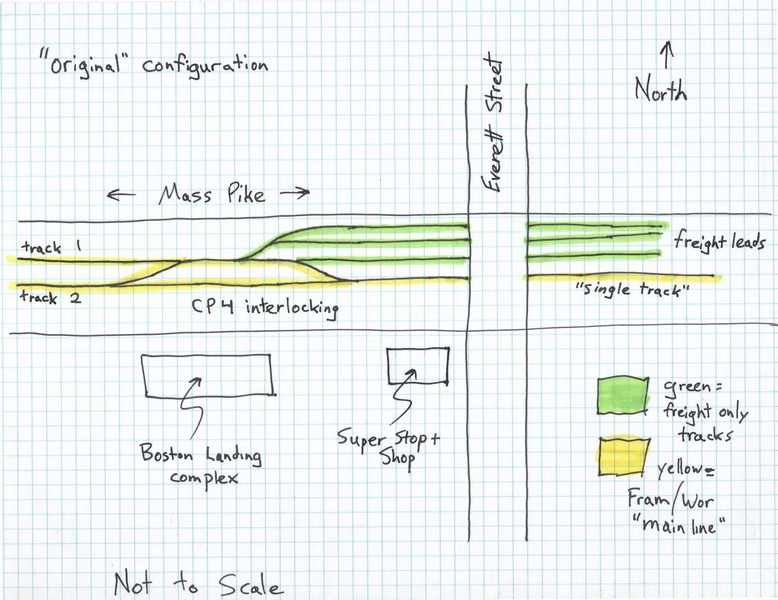

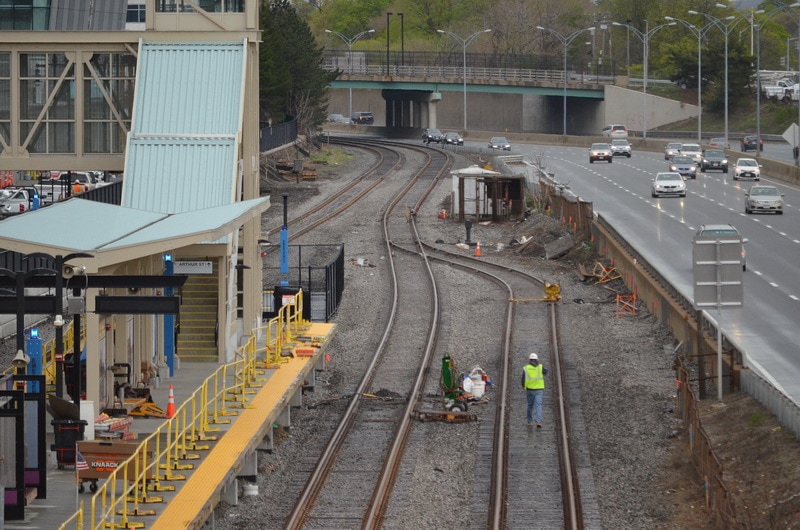
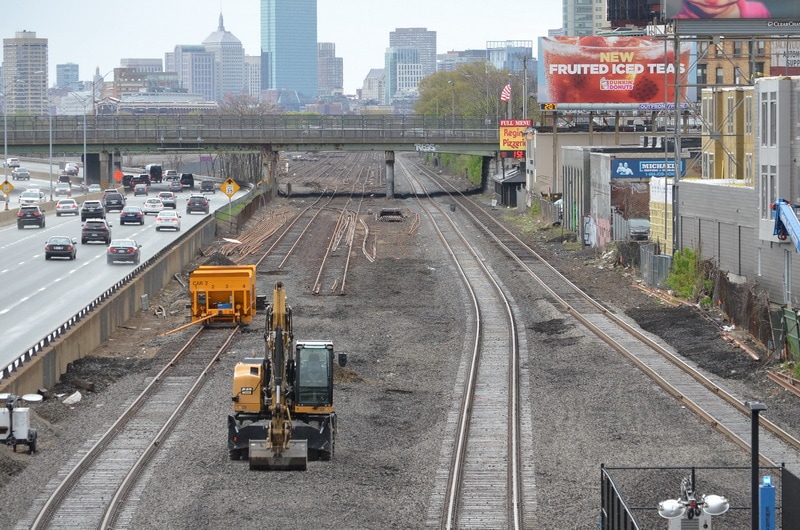
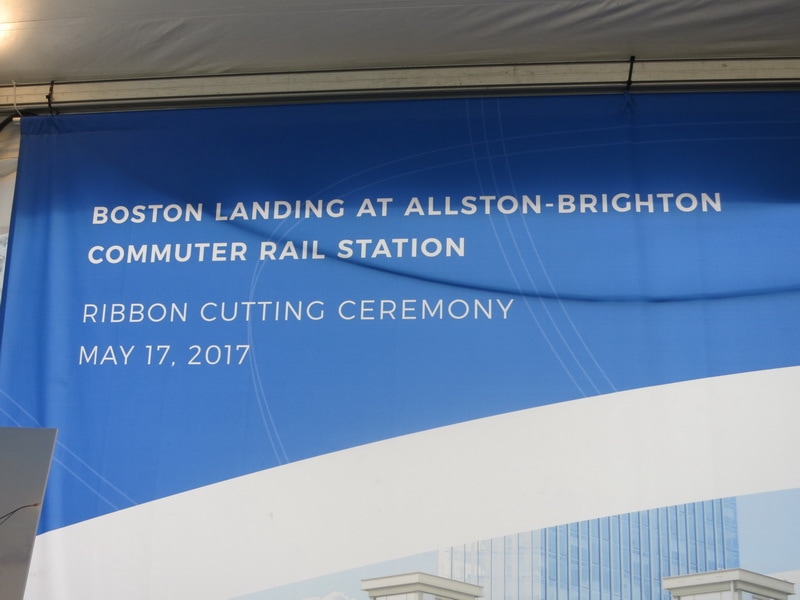
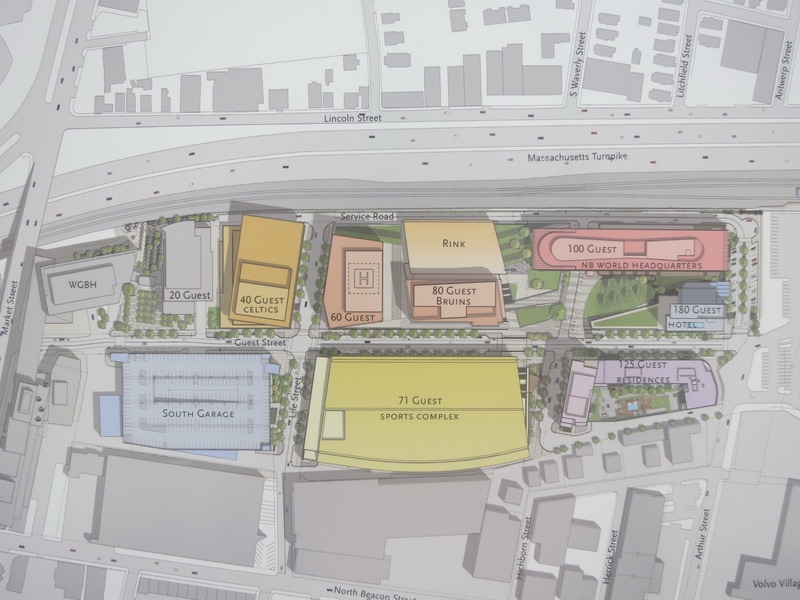
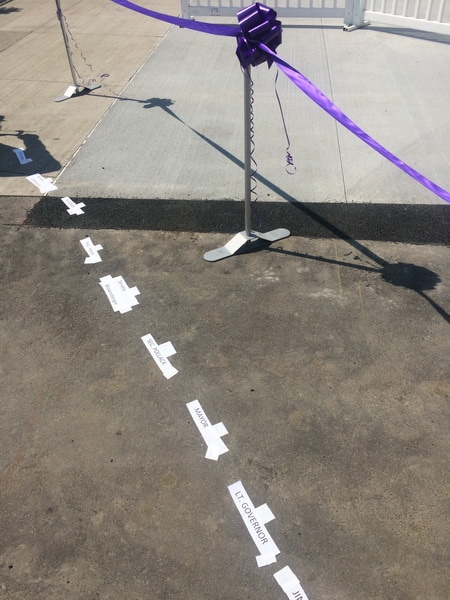
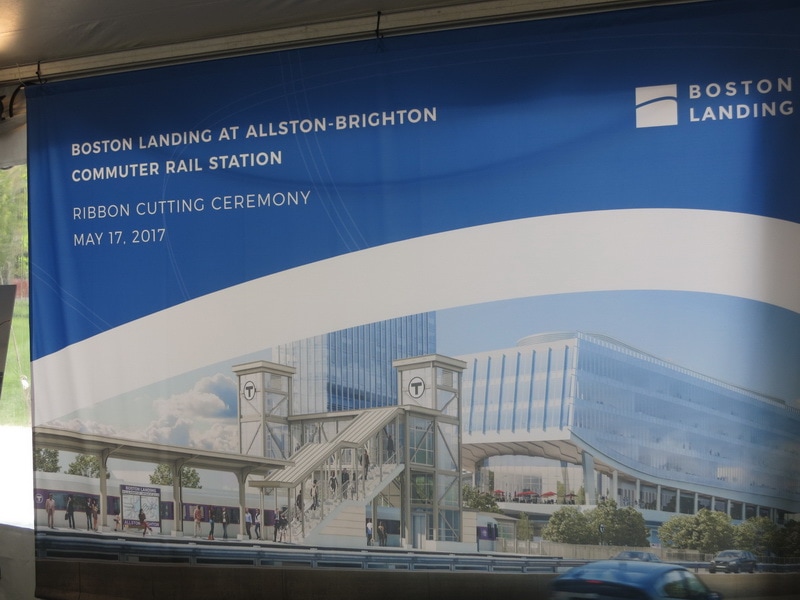
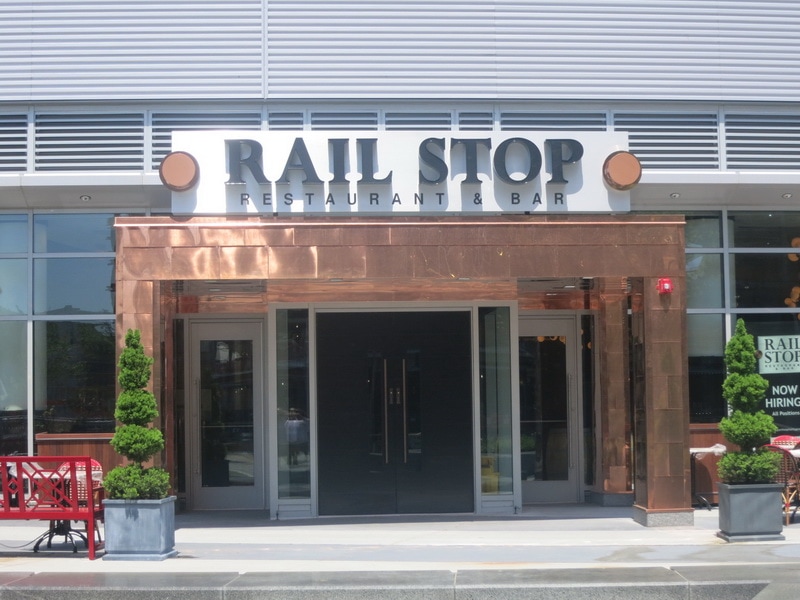
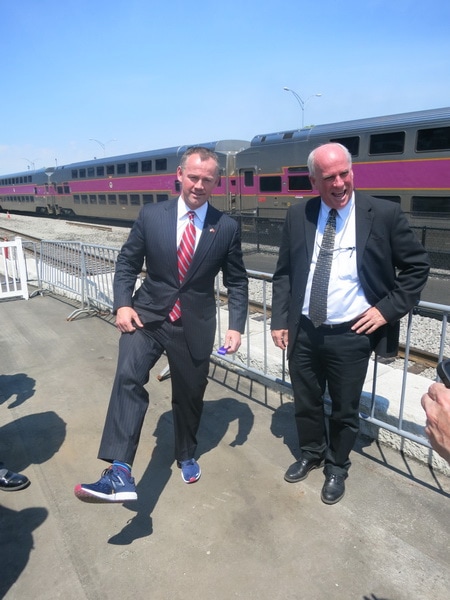
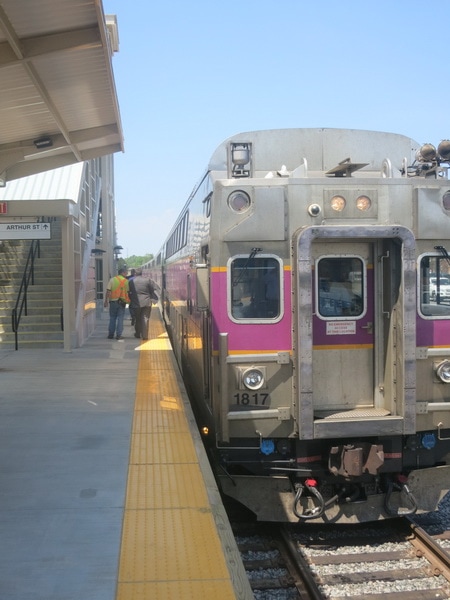
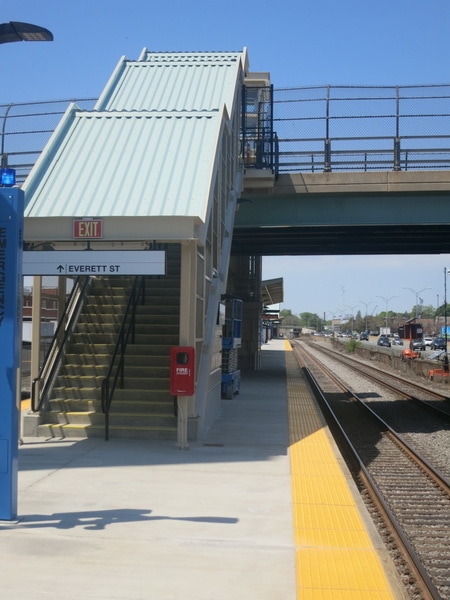
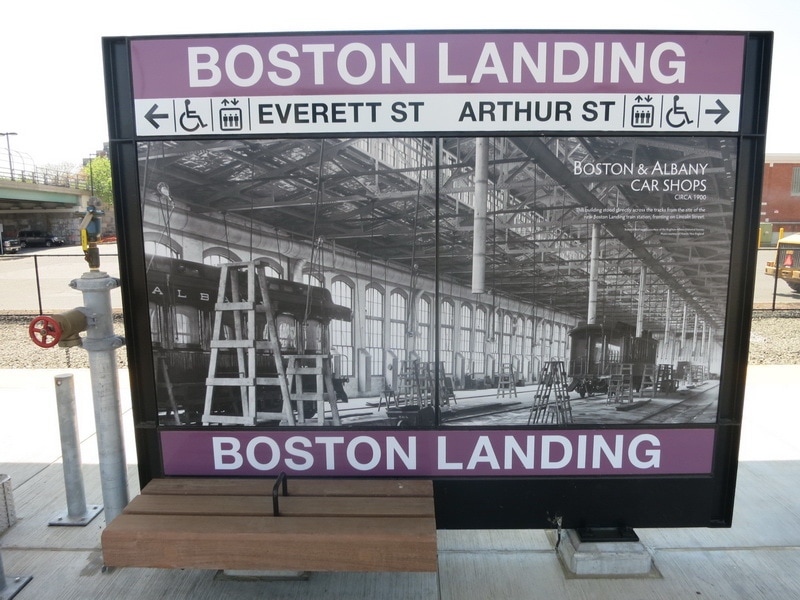
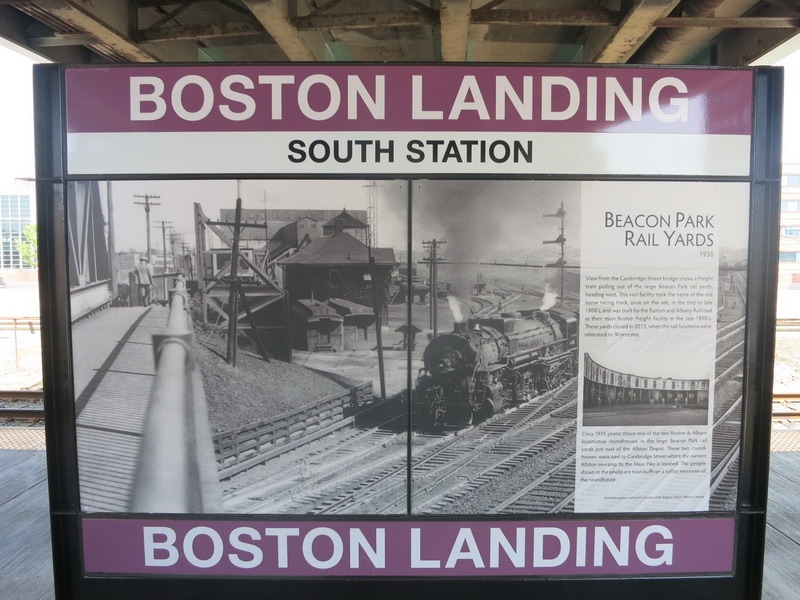
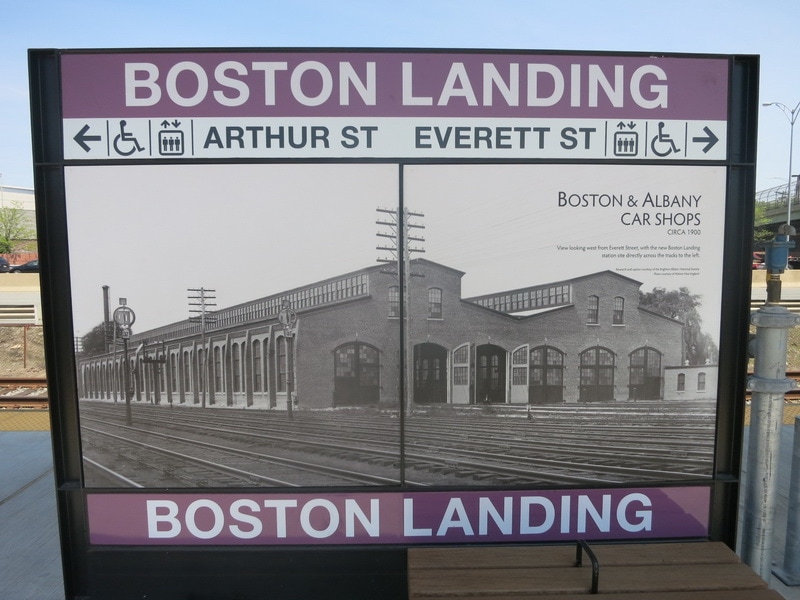
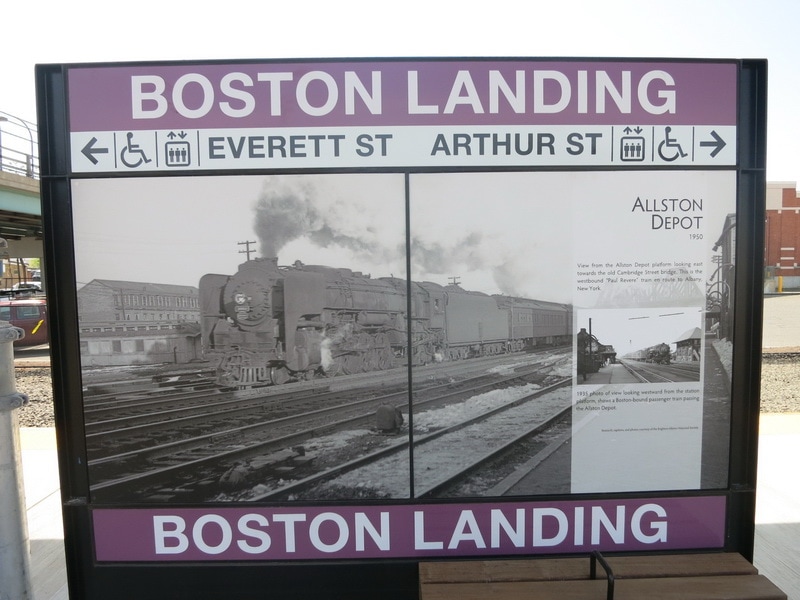
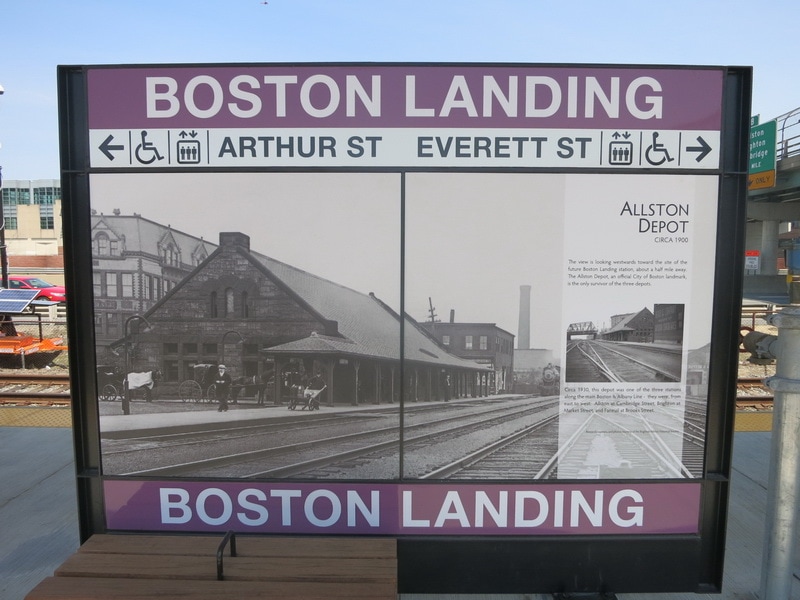
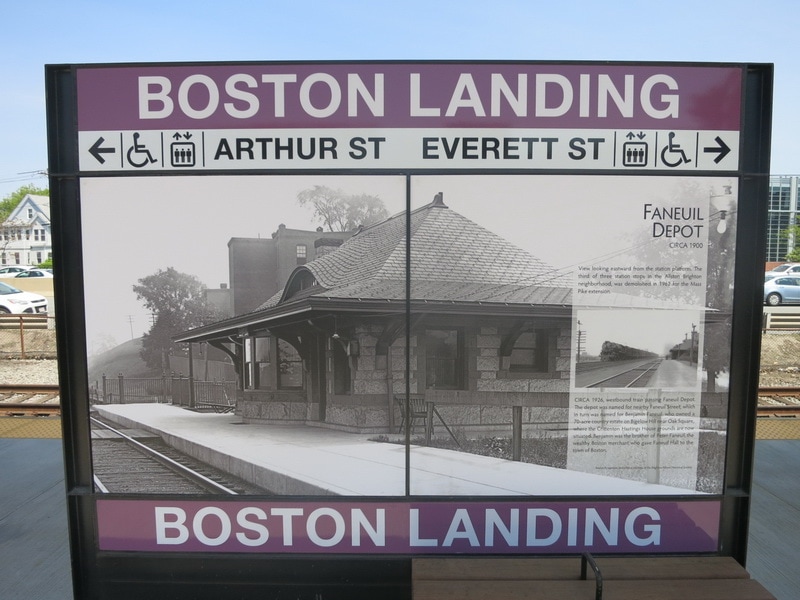
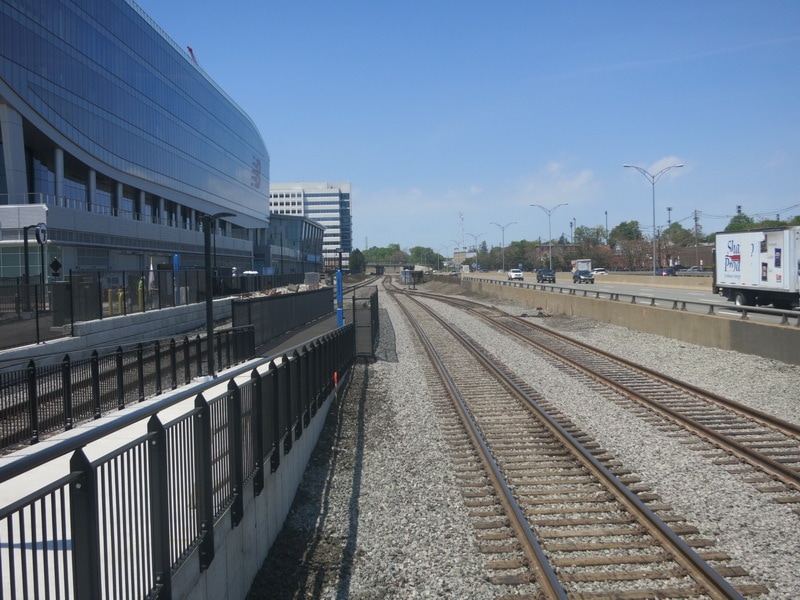
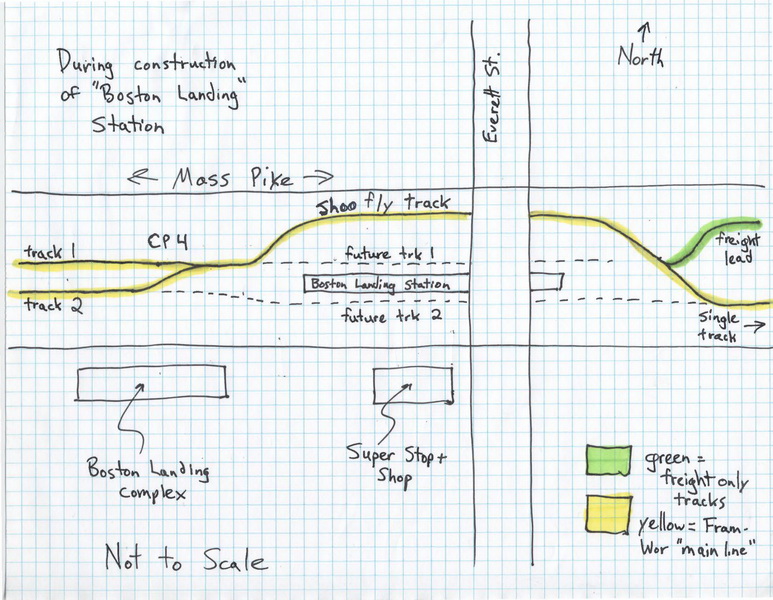

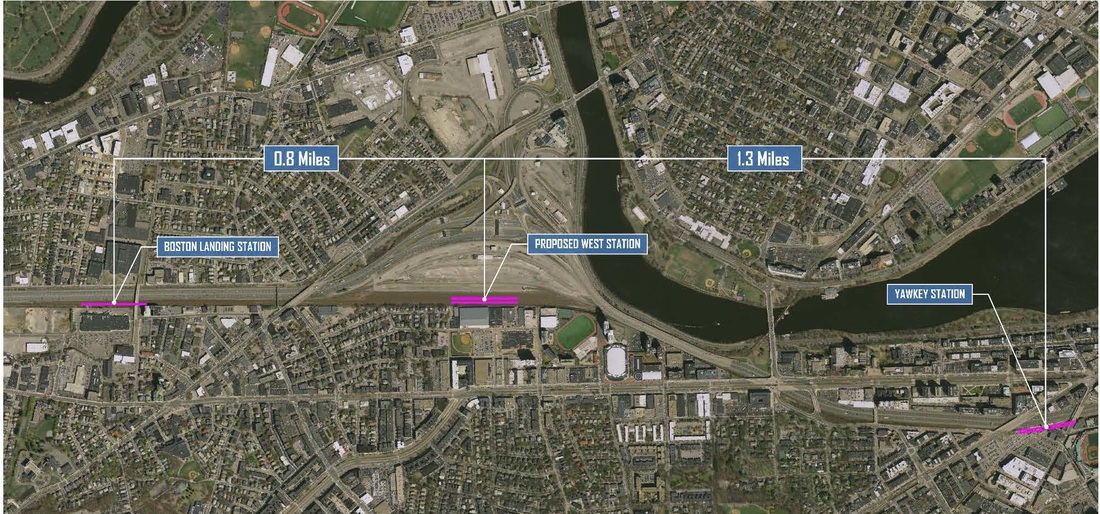
 RSS Feed
RSS Feed
